- magyar
- english
- Русский
Bioinformatics and Data Science in Genomic Studies
INVITED SPEAKERS
- Katalin Gombos
Synthesis of molecular genetics and bioinformatics to develop clinical diagnostics and surveillance
University of Pécs, Clinical Center, Department of Laboratory Medicine, Pécs, Hungary
Abstract: The molecular diagnostics laboratory unit of the Department of Laboratory Medicine at Pécs University is involved in different areas of molecular genetic diagnostics and research. We identify molecular biomarkers from different human sample types including conventional blood samples as well as urine, liquor, saliva, body fluids and mucosal swabs. The applied workflow follows PCR amplification or hybridization of the target DNA or RNA molecules and corresponding fluorescent colorimetric detection in qPCR or droplet digital PCR detection formats. Our focused target analyses are often applied in infectious disease diagnostics and surveillance, eg. the SARS-CoV-2 pandemics or in tumor identification and follow up. In these applications molecular genetic data is integrated with other clinical or epidemiological data and analyzed by various bioinformatical tools. We demonstrate a dynamic map of SARS-CoV-2 that was constructed based on 270 000 genetic tests, clinical, geographic and demographic data to follow the spatial and timely spread of the virus within the South-Transdanubian population. We also introduce a 3D visualization of cancer organization field in a combined genomic and radiology based diagnostical approach we achieved by integrating different types of medical data by bioinformatics.
.
- Eszter Virág
Time-course gene expression analysis of the effect of SC-CO2 garlic extract encapsulated in nanoscale liposomes (Barbara Kutasy, Kincső Decsi, Géza Hegedűs)
Department of Molecular Biotechnology and Microbiology, Institute of Biotechnology, Faculty of Science and Technology, University of Debrecen, Egyetem Square 1, 4032 Debrecen, Hungary; Research Institute for Medicinal Plants and Herbs Ltd., 2011 Budakalász, Lupaszigeti út 4., Hungary
Abstract: The biostimulant phytochemicals as alternatives to synthetic chemicals are gaining ground in sustainable agricultural production nowadays. The medicinal herb, garlic (Allium sativum) has a spectacular therapeutic reputation due to its antimicrobial properties. The effectiveness of supercritical carbon dioxide (SC-CO2) extraction of A. sativum could help preserve bioactive compounds and be used as a biostimulant agent. The SC-CO2 garlic was formulated in liposomes and used as a nanoscale drug delivery system to reach better efficiency of penetration and translocation. Time course gene expression profiling was analysed as response to this agent in wheat. A comprehensive bioinformatics work involving combined pathway analysis showed a strong trigger of defence pathways of abscisic acid (ABA) and pathogenesis-related (PR) genes.
- Péter Oláh
Analysis of whole-genome and marker gene-based cutaneous microbiome signatures in autoimmunity and allergy
Department of Dermatology, University Hospital Duesseldorf, Medical Faculty, Heinrich-Heine-University, Duesseldorf, Germany
Department of Dermatology, Venereology and Oncodermatology, Medical Faculty, University of Pécs, Hungary
Abstract: The human skin harbors a diverse and dynamic microbiota, with high geographical, interpersonal and intrapersonal (topological and temporal) variability. While during the past decade, high-throughput sequencing efforts in combination with improved culture-based screening methods have provided insights into cutaneous species diversity with unprecedented detail, our understanding of the functional relationships and factors of homeostatic balance in the skin ecosystem is still limited. Thus, metagenomic studies of patient cohorts and in vitro models of diseases in which cutaneous homeostasis is upset are of key importance. Here, we present large-scale functional microbiome studies in two such model diseases, psoriasis and atopic dermatitis, with special regard to pathology-driven shifts observed in skin microbial communities.
- Serhii Vakal
Why protein folding is not yet solved, and you should be careful when using AlphaFold as a "black box"
Structural Bioinformatics Laboratory, Biochemistry, Faculty of Science and Engineering, Åbo Akademi University, Turku, Finland
Abstract: The recent introduction of AI-based protein modeling tools such as AlphaFold (AF) and RosettaFold, showing impressive results in the CASP14 benchmark, is considered one of the major scientific breakthroughs of the last few years. Indeed, the accuracy of the predictions offered by these tools is much higher than in previous approaches, almost comparable to experimental methods. Soon, the hype around AlphaFold emerged, with strong claims like "50-year-old problem finally resolved", "protein folding problem solved," or "AlphaFold will revolutionize drug discovery." However, despite the irrefutable achievements and advantages of AlphaFold, such claims are somewhat premature. Many limitations and modeling challenges should be kept in mind when using AI-driven tools like AF. For example, AF struggles with modeling disordered regions, especially in the case of intrinsically unstructured proteins. It cannot predict the oligomeric state of a protein. Moreover, it is not able to handle unnatural or modified amino acids. For some proteins, its predictions are heavily biased towards ligand-bound or apo-conformation. In the case of complex-forming proteins, AF usually predicts only one conformation – either free or complex-bound. Furthermore, it cannot predict conformation-changing events, like pathological misfolding of prion-like proteins. It can model only proteins but not co-enzymes and bound ligands. In the case of large proteins, it struggles to predict the mutual arrangement of domains and connecting loops. AlphaFold sometimes shows low confidence for correct models, which disallows researchers to rely on the prediction, and so on. Regarding drug discovery, although reliable modeling of drug targets is essential, especially in structure-based rational design, most of the time and costs are still spent not on initial discovery stages but on multphase clinical trials. This report will expand on current limitations and details that must be considered by any researcher using AlphaFold or RosettaFold as a "black box" without solid previous experience in protein modeling. In addition, useful hints and recommendations on how to get the best of these tools will also be provided.


